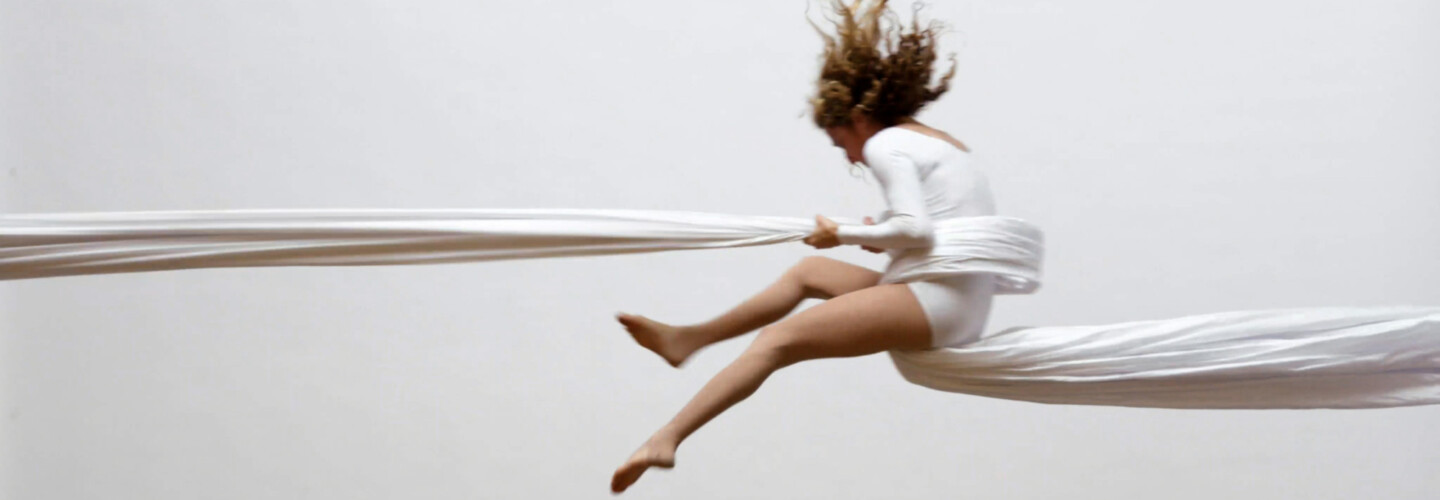
Opening with a quote from high wire artist Philippe Petit, EVE from filmmaking duo Jeff Consiglio and Alex Naufel – better known under their collective moniker madeinhollywoodusa – reframes the graceful movements of Aerialist JB Naufel for a gravity defying exploration of the relationship between pleasure and risk. DN sat down with Jeff to discover the origins and ethos of madeinhollywoodusa and the challenges of conceptualising a hyper-real world which breaks the laws of physics.
EVE marks the 13th original film to come out of your collaborative partnership with Cinematographer Alex Naufel, how did the two of you come together to form madeinhollywoodusa.
Alex and I were thrown together by a producer friend on a short horror film that I was directing way back in 2003. We didn’t know each other at all and didn’t even really like each other much the first time we met, but we’re now sort of joined at the hip creatively so ultimately it seems things worked out OK.
We formed madeinhollywoodusa nine years later one day when we were about to begin production on a few first short films and got together to come up with a name for ourselves. Instead of working on that task we drank wine and watched all of the documentary X: The Unheard Music because we both love X and we love the gritty 80s LA that gave birth to X. The last credit to roll up at the end of the film was the line “Made in Hollywood USA” which all film buffs know was a rubber stamp on almost every movie made in Hollywood for its first 70 years of existence. It might have been X or it might have been the wine, but about 90 seconds later we had secured the domain name madeinhollywoodusa and that was that.
We’re much more intrigued by the struggle of creation than in any one version of perfection.
What do you feel defines the DNA of a madeinhollywoodusa project?
The DNA of a madeinhollywoodusa film is basically defined by two things: aiming slightly off-center and celebrating the beautiful mess of Process that is aimed at a shining Result. Our first film WAR is an abstract read of the bloody fight that goes on during the creative process, and our 11 films in the micromentary series RECORD COLLECTION celebrate the ordinary rather than the exceptional, because that’s where we all exist most of the time and if you look closely, all the good stuff is right there just off-center from the spotlight that’s focused on the bright and shiny thing.
EVE is a bit of a companion piece to WAR in that we plunge again into abstract comparisons using an aerialist’s struggle to achieve pleasure while expressing some form of emotion in spite of the risk and intense physicality involved. It’s right there in that juxtaposition where we find what is most interesting to us. We’re much more intrigued by the struggle of creation than in any one version of perfection.
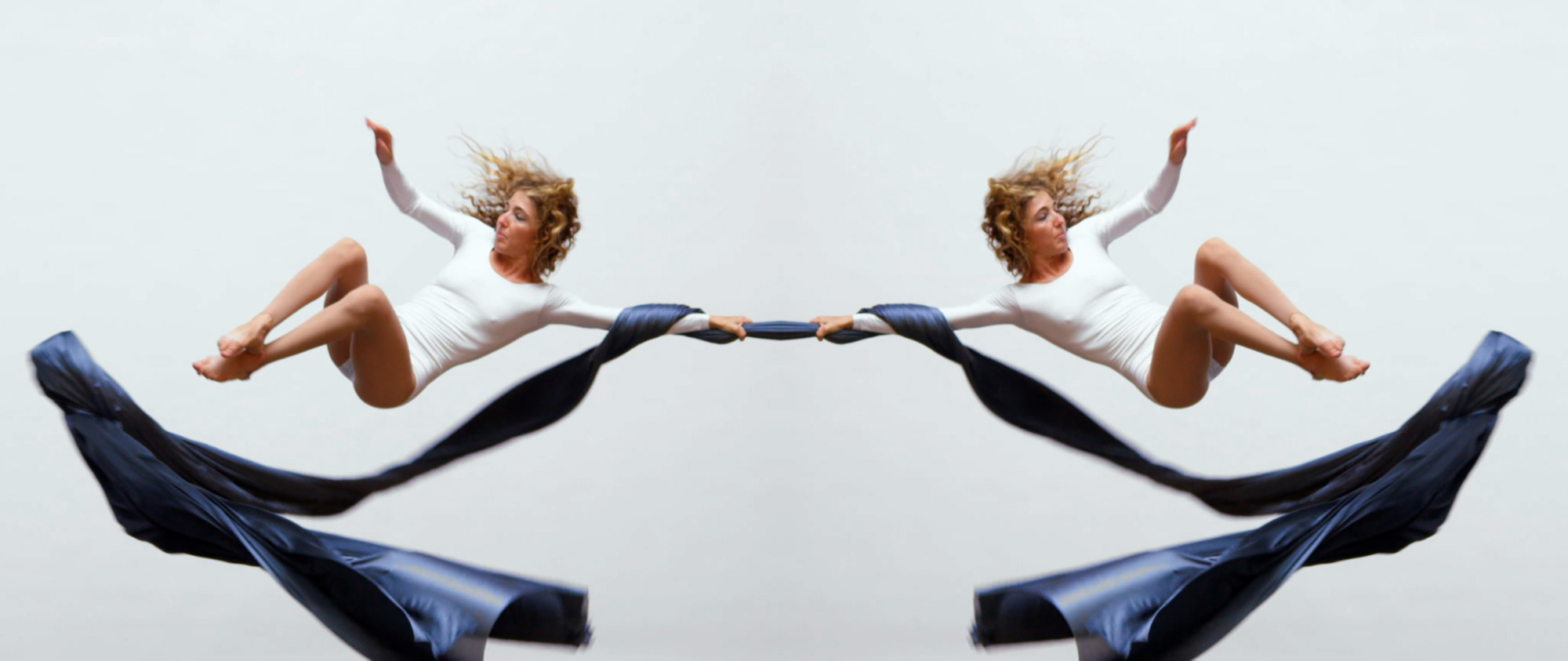
How did the knowledge that EVE would present the graceful movements of Aerialist Jb Naufel horizontally inform the choreography of her performance as compared to an aerialist’s typical routine?
Jb was really the third creator of this project and she had a ton of ideas long before we went into the studio, plus she brought on board her aerial coordinator and coach Tania Holt to help devise specific movements that would work when flipped on its side. In general those fell into three categories – still body slides down the tissu that cover a short distance across the horizontal plane, flipping and flailing drops that extend from end to end and then spins that hover in one place like magic.
We’d love to say that we carefully choreographed ALL of Jb’s aerial performance, but watching her move horizontally across the frame on the tissu was so mesmerizing and jam packed with surprise that we knew that almost anything she did would be fascinating. Plus she’s a badass on the tissu and it’s thrilling to watch most anything she does. So there was a lot of playtime on set where we pretty much said, “Just go up and come down somehow” and then she’d do something epic.
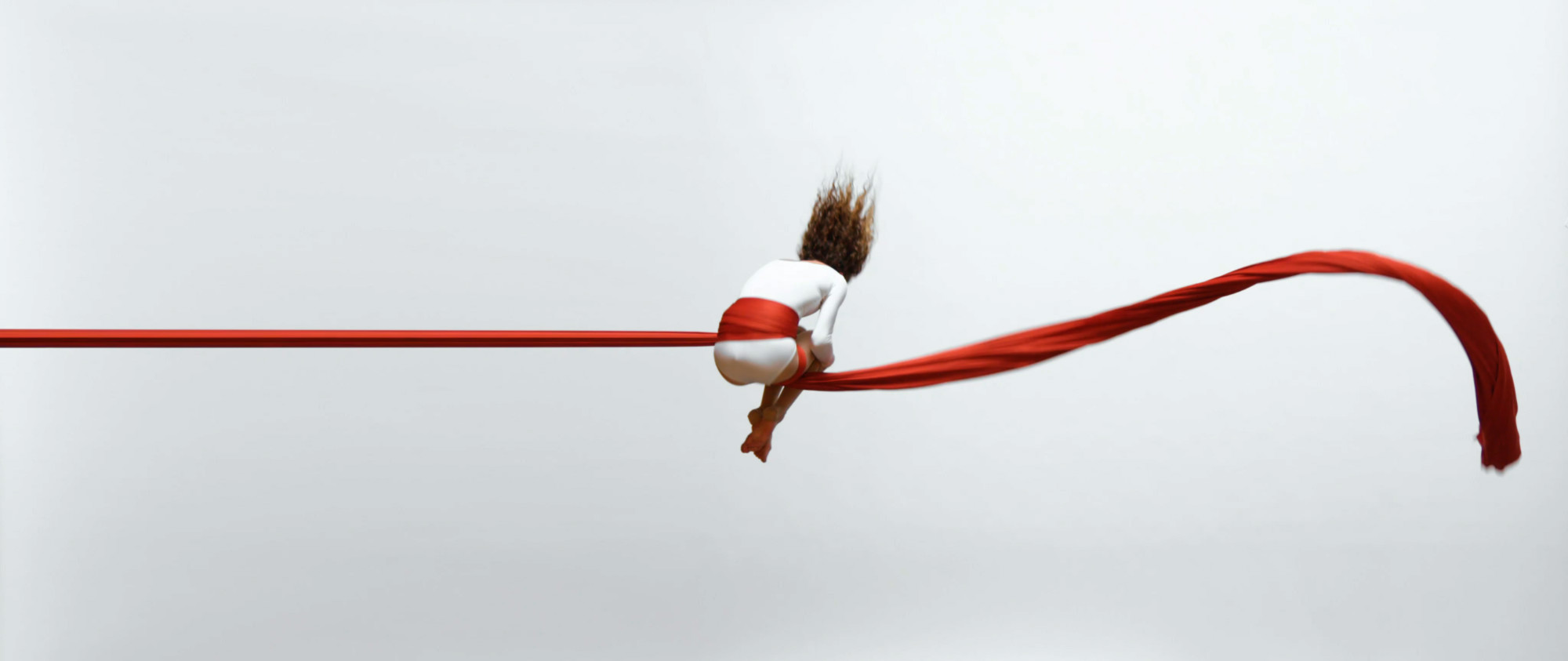
That does no justice at all to the careful work Jb and Tania did in planning each move and then of course what Jb did to execute them over a hundred times in one day. But you can see the end result of each of those categories in the finished piece – elegant still poses sliding slowly across the tissu, frenetic tumbling falls and then some crazy spins. And about those spins, the only qualifier Jb gave us was to hold off on any big spinning shots until the end of the day because it can make her dizzy. So when you see her on the red tissu tucked into a ball endlessly spinning, that was most likely the last shot of the day. And even then I think Alex and I got more dizzy watching her than she did doing it. Jb is a rockstar.
The film was captured on the Red Helium in a mix of resolutions and frame rates. Could you tell us more about the ways in which the different components of the film informed their various shooting settings and styles?
We planned to finish the piece at 4k so inside the aerial studio we shot everything at 6k so that we could punch in on shots and at 90fps so that we could ramp up speed as needed. Once we got outside we started varying the frame rate because when Jb was very far away from camera her movement from one side of the frame to the other took forever so we shot some of the wider landscapes at 48fps and that allowed the Helium to go up to 8k. Alex also went up to 8k a few times just to grab the most pixels we could of that outrageously wild Salton Sea landscape because: Salton Sea. It’s so vast and inspiring there. Also, I think Alex wanted to print some frames and put them on his wall so he snuck off a few 8k shots for the hell of it.
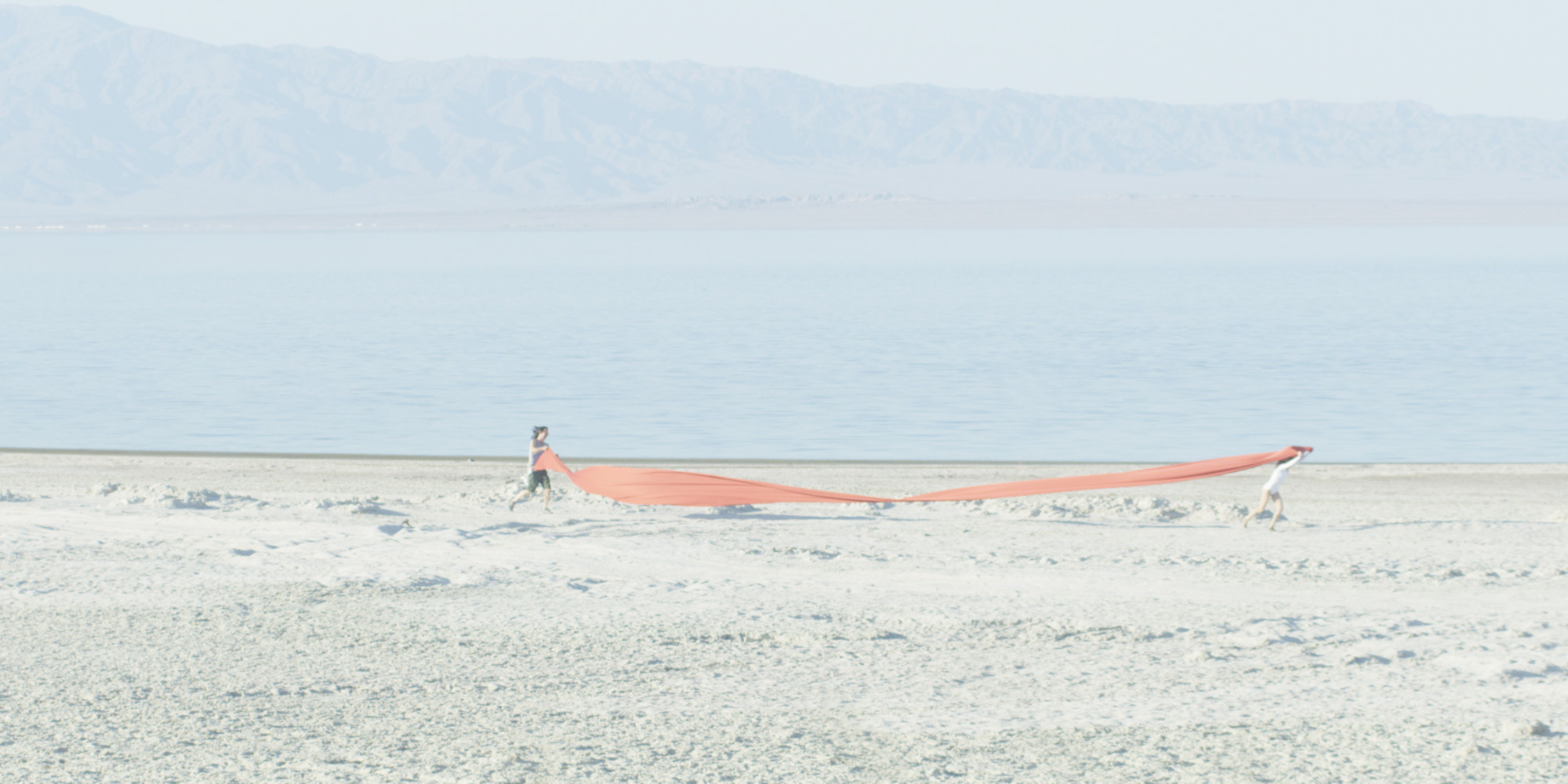
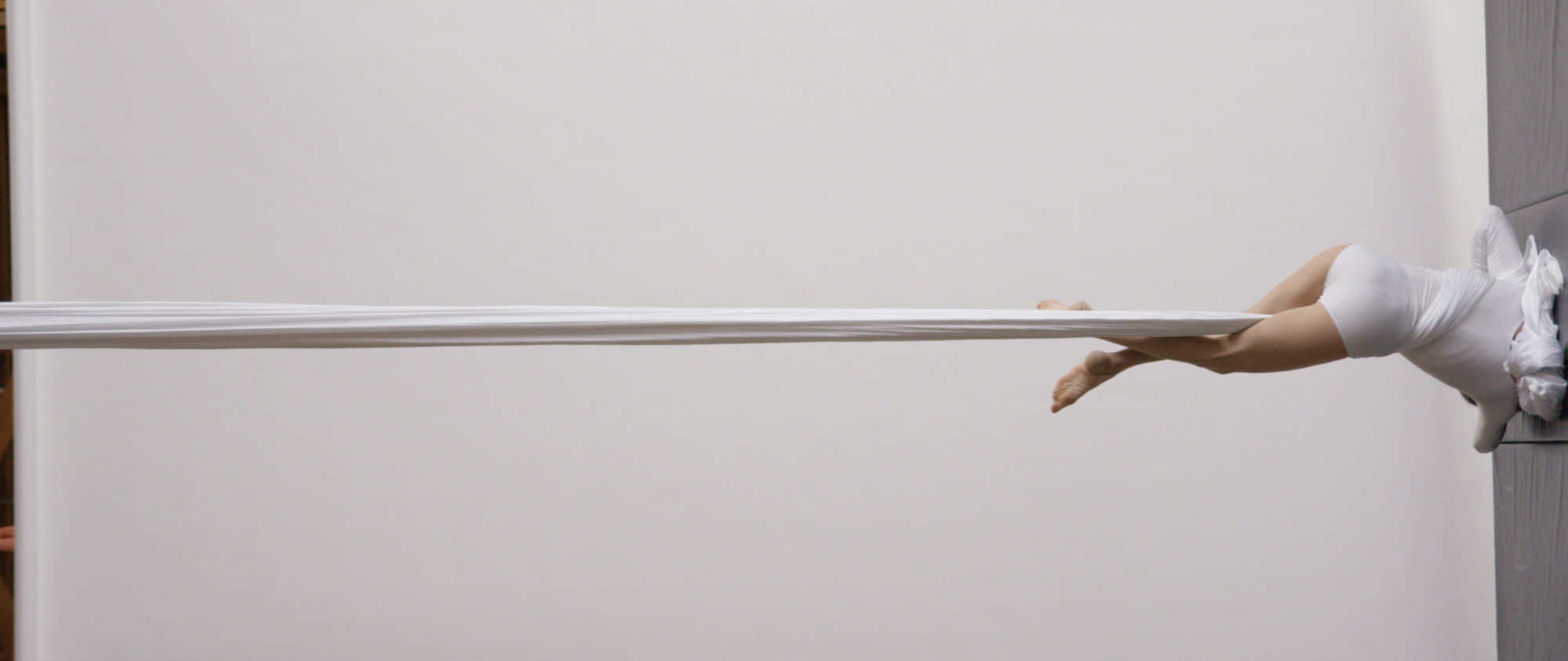
Were there any particular challenges you faced as a team in the making of EVE?
EVE was especially challenging from the moment of inception. Conceptually we wanted to present the act of tissu in a manner that was subtle and graceful but also athletic and physical. We also wanted to be close to the performer which one almost never experiences in filmed aerial performances.
Practically speaking it is extremely difficult to capture an aerial performance on camera because it’s vertically-oriented and we shoot and view films horizontally, the natural rotation of hanging fabric coupled with a swivel often makes the best angle of the pose face away from either the camera or from the light(!) and then you have to deal with all the wires and pulleys and ceilings of studios in your field of vision. When you’re there in person all of that goes away very quickly and you’re lost in amazement at the performance but on camera, it’s a vastly different story.
Flipping the aerialist’s world on its side resolves a lot of those problems because now you have all that space in which to capture what’s happening, but then you have a hyper-real world that no longer follows the laws of physics. So you gain a solution and adopt a brand new problem of having to conceptualize and then realize a narrative in an off-kilter world. But this was indeed the very key to being able to express it in a new and unexplored way, so we dove into this one happily.
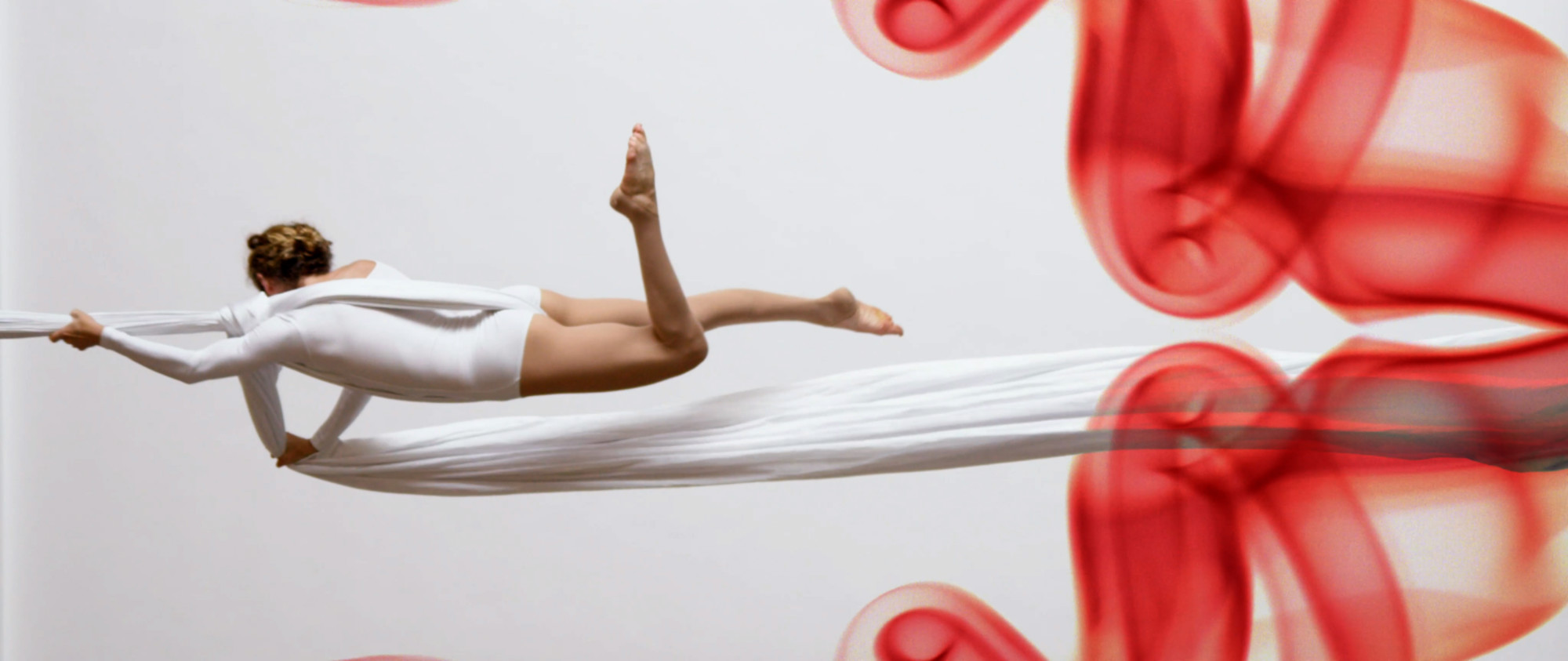



To what extent did the film’s structure and progression follow a scripted plan vs being devised through experimentation?
We love to find our films organically through the process of making them. We knew the basic premise of EVE’s narrative but didn’t want to script it out, we wanted to feel what was happening live in the studio that first day of filming and listen to what that was telling us. We approach our micromentaries that way – we find a subject and the premise for what they will do on camera then go in, set things up and let the rest unfold in front of us. That gives us a new perspective on each original concept that we can then respond to and evolve further in editorial.
We love to find our films organically through the process of making them.
So EVE evolved a lot in front of our eyes on that first day of filming and then when we began experimenting in editorial we had a ton of variations on the original idea to respond to. Plus we had a crazy amount of really beautiful footage so we did a LOT of editorial exploration, though we always stayed along the path of the original premise of exploring this relationship between Pleasure and Risk. That process led us to the next stages of production outdoors and with some macro elements, and it also led Alex to the quote from Philippe Petit’s book On The High Wire which just locked everything into place for us.
Aaron Drake provides an exquisitely ethereal score here, were there particular references you discussed which fed into the mood and form of the music?
We built the first rough cuts of EVE on top of a temp music score borrowed from a popular composer and well known film and asked our Composer Aaron Drake to create something like that temp score. This is a trap we all fall into over and over again, essentially a sordid affair with a piece of music that will never become available to you and which you think you can never do without. Then Aaron did what the best composers do which is basically saying, “Hold my beer.”
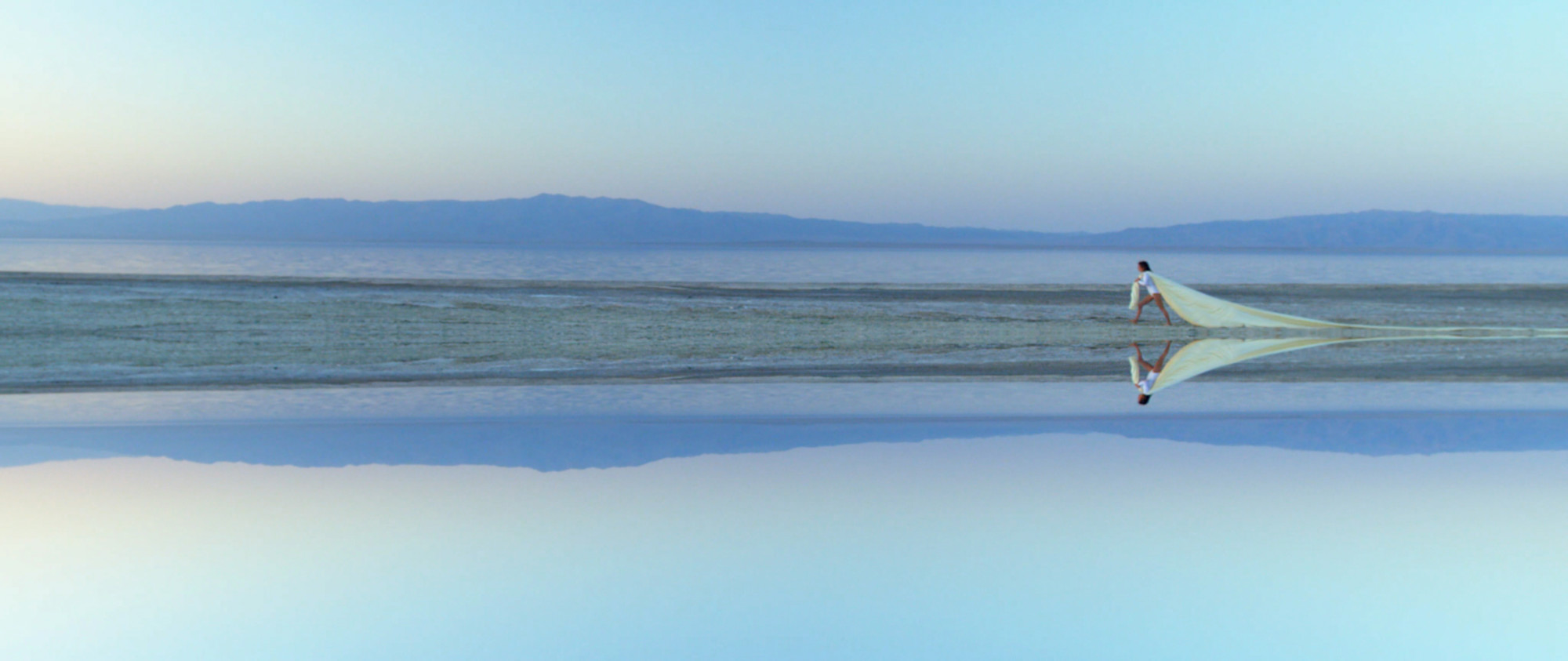
He came back with something completely original that changed everything and now we no longer speak of that first demo love because we found what we really needed. Of course, there were echoes of orchestration and musical energies from that original score, things like the haunting vocals and the brassy swells, but what Aaron did was to find inspiration in the emotions that were triggered by the original score rather than its instrumentation or melodic structure.
He responded to the themes we were trying to identify in those early versions, such as power, femininity, beauty and the buzzy tension that comes from a great risk fully embraced. He knocked it out of the park, and even when we went to his studio to tweak and evolve things we were basically just identifying elements already there in the score and pulling them into focus here and there, like shining a light on this pretty thing or that pretty thing. There were a lot of pretty things.

